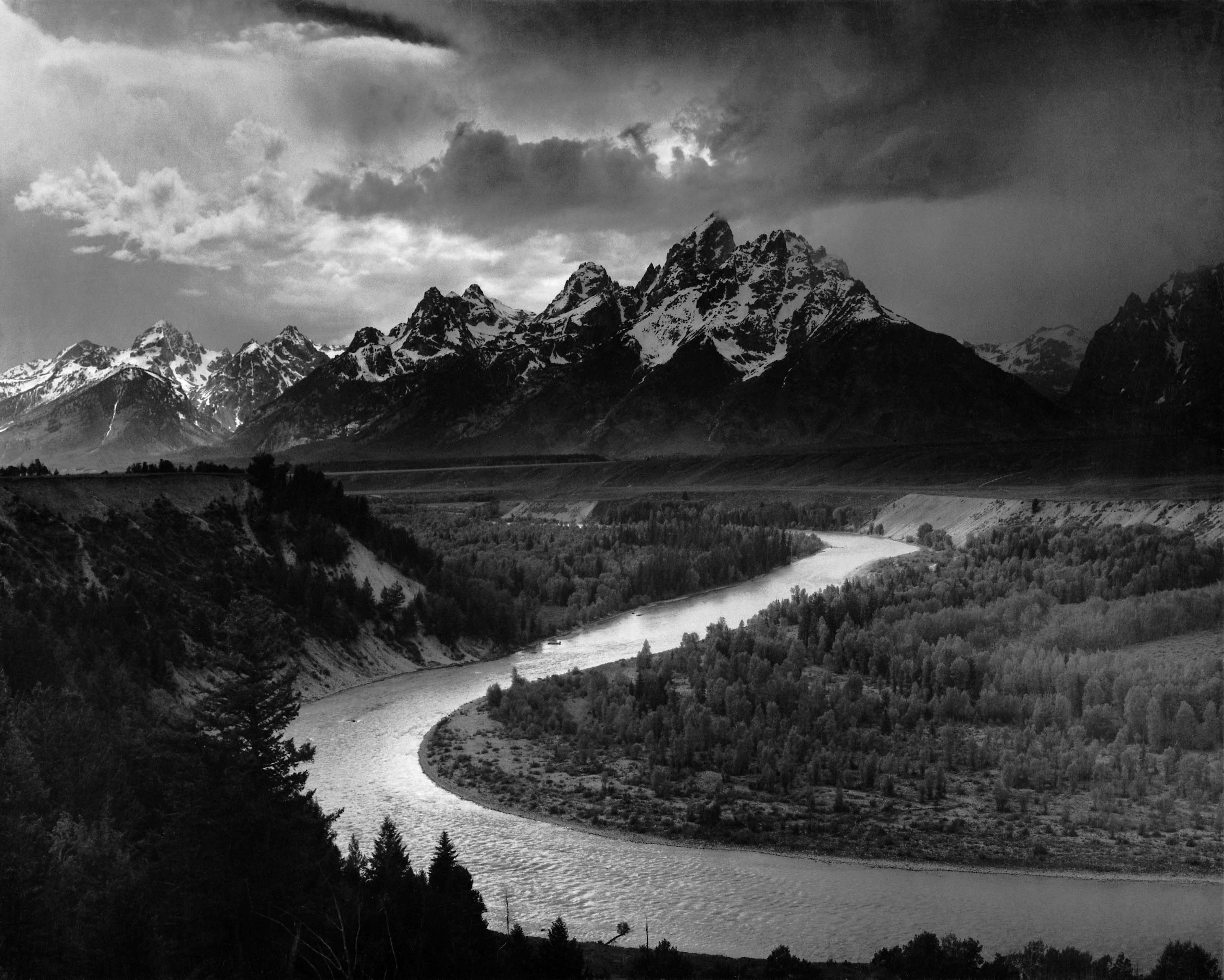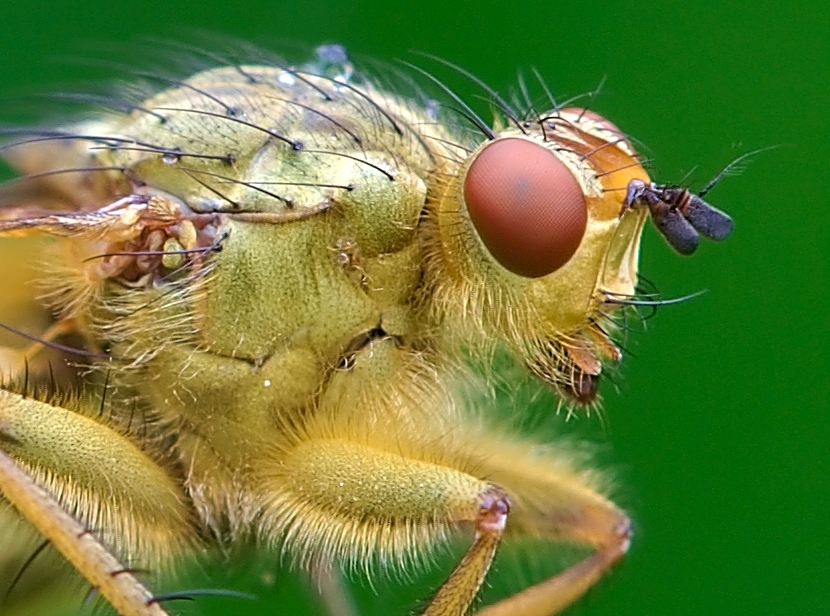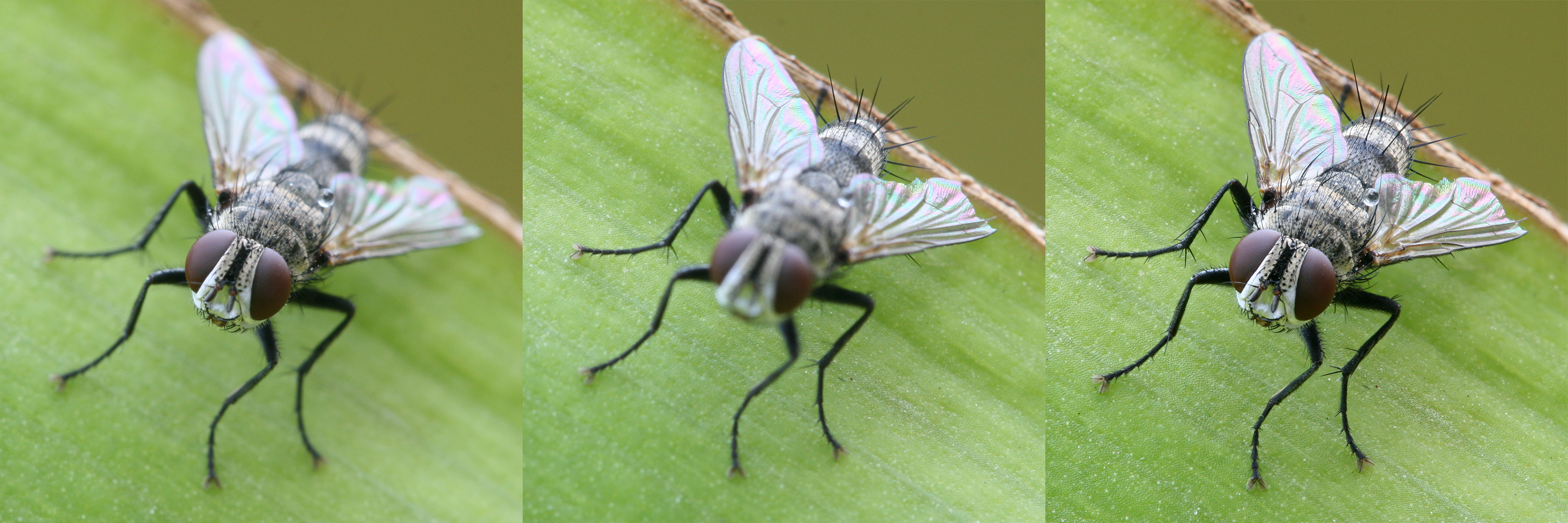|
Helicon Focus
Helicon Focus is a proprietary commercial digital image processing tool, first released in 2003, developed and published by Helicon Soft Limited. Like programs such as CombineZ or Zerene Stacker, Helicon Focus is designed to blend the focused areas of several partially focused digital photographs to increase the depth of field (DOF) in an image. Overview Helicon Focus can be used to increase DOF in any situation, though its primary uses are in macro photography, landscape photography and photo-microscopy. In macro photography, the DOF is often very small. To increase it, Helicon Focus is capable of merging several differently focused images together to create one image where the subject is entirely in focus. Features * Automatic adjustments during stacking * "Dust map" for removing black points from the resulting images * Supports most common file types, including RAW, TIFF, JPEG, JPEG 2000, and BMP * Can add text and a scale bar * 3D stack visualization and Wavefront .obj ex ... [...More Info...] [...Related Items...] OR: [Wikipedia] [Google] [Baidu] |
Helicon Soft Logo
Helicon or Helikon may refer to Places *Helicon (river), a former river in the Macedonian city Dion, mentioned in Greek mythology *Mount Helicon, mountain in Boeotia, Greece *"Helikon", an 1893 mansion designed by Charles Slayter in Strathfield, New South Wales *Helikon Park, a park in Randfontein Local Municipality, West Rand District Municipality, Gauteng, South Africa *Torre Helicon, the fourth tallest building in Monterrey, Mexico * Helicon Home Colony, an experimental community formed by author Upton Sinclair in Englewood, New Jersey *Fictional planet in the Arcturus sector where Hari Seldon was born in the ''Foundation'' series of Isaac Asimov Arts and entertainment Music * Helicon (instrument), a brass musical instrument in the tuba family *Helicon Mountain, studio of Jools Holland *''Helicon'', a 1977 album by The Four Seasons *Helicon Records, a record label founded in Israel in 1985 *"New Paths to Helicon, Pt. 1" and " New Paths to Helicon, Pt. 2", songs by the Scotti ... [...More Info...] [...Related Items...] OR: [Wikipedia] [Google] [Baidu] |
Digital Photography
Digital photography uses cameras containing arrays of electronic photodetectors interfaced to an analog-to-digital converter (ADC) to produce images focused by a lens, as opposed to an exposure on photographic film. The digitized image is stored as a computer file ready for further digital processing, viewing, electronic publishing, or digital printing. Digital photography spans a wide range of applications with a long history. In the space industry, where much of the technology originated, it pertains to highly customized, embedded systems combined with sophisticated remote telemetry. Any electronic image sensor can be digitized; this was achieved in 1951. The modern era in digital photography is dominated by the semiconductor industry, which evolved later. An early semiconductor milestone was the advent of the charge-coupled device (CCD) image sensor, first demonstrated in April 1970; the field has advanced rapidly and continuously ever since, paced by concurr ... [...More Info...] [...Related Items...] OR: [Wikipedia] [Google] [Baidu] |
Photo Software
A photograph (also known as a photo, image, or picture) is an image created by light falling on a photosensitive surface, usually photographic film or an electronic image sensor, such as a CCD or a CMOS chip. Most photographs are now created using a smartphone/camera, which uses a lens to focus the scene's visible wavelengths of light into a reproduction of what the human eye would see. The process and practice of creating such images is called photography. Etymology The word ''photograph'' was coined in 1839 by Sir John Herschel and is based on the Greek φῶς ('' phos''), meaning "light," and γραφή (''graphê''), meaning "drawing, writing," together meaning "drawing with light." History The first permanent photograph, a contact-exposed copy of an engraving, was made in 1822 using the bitumen-based "heliography" process developed by Nicéphore Niépce. The first photographs of a real-world scene, made using a camera obscura, followed a few years later at Le Gras ... [...More Info...] [...Related Items...] OR: [Wikipedia] [Google] [Baidu] |
Depth Of Field
The depth of field (DOF) is the distance between the nearest and the furthest objects that are in acceptably sharp focus in an image captured with a camera. Factors affecting depth of field For cameras that can only focus on one object distance at a time, depth of field is the distance between the nearest and the farthest objects that are in acceptably sharp focus. "Acceptably sharp focus" is defined using a property called the " circle of confusion". The depth of field can be determined by focal length, distance to subject, the acceptable circle of confusion size, and aperture. Limitations of depth of field can sometimes be overcome with various techniques and equipment. The approximate depth of field can be given by: : \text \approx \frac for a given circle of confusion (c), focal length (f), f-number (N), and distance to subject (u). As distance or the size of the acceptable circle of confusion increases, the depth of field increases; however, increasing the size ... [...More Info...] [...Related Items...] OR: [Wikipedia] [Google] [Baidu] |
Helicon Filter
Helicon Filter, also referred to as Helicon, Filter, or as HF, was a proprietary commercial and shareware photo editing software program for Microsoft Windows, similar to such programs as Adobe Photoshop and GIMP, developed and published by Helicon Soft Ltd. Unlike these other programs, Helicon Filter is designed primarily to edit and improve existing photos and not for graphics creation. Helicon Filter's interface also differs from other programs in that compact toolbars and menus containing editing tools are replaced with labeled "filter" tabs, each tab containing labeled edit options specific to a single aspect of the picture. Although some editors used to Photoshop-style programs may initially find this layout unfamiliar and unlike the standard toolbar layout, beginners and those who don't recognize the standard icons generally find this very helpful for getting through the editing process. Overview Helicon Filter, formally Helicon NoiseFilter, was introduced in August ... [...More Info...] [...Related Items...] OR: [Wikipedia] [Google] [Baidu] |
Wavefront
In physics, the wavefront of a time-varying ''wave field'' is the set ( locus) of all points having the same '' phase''. The term is generally meaningful only for fields that, at each point, vary sinusoidally in time with a single temporal frequency (otherwise the phase is not well defined). Wavefronts usually move with time. For waves propagating in a unidimensional medium, the wavefronts are usually single points; they are curves in a two dimensional medium, and surfaces in a three-dimensional one. For a sinusoidal plane wave, the wavefronts are planes perpendicular to the direction of propagation, that move in that direction together with the wave. For a sinusoidal spherical wave, the wavefronts are spherical surfaces that expand with it. If the speed of propagation is different at different points of a wavefront, the shape and/or orientation of the wavefronts may change by refraction. In particular, lenses can change the shape of optical wavefronts from planar to ... [...More Info...] [...Related Items...] OR: [Wikipedia] [Google] [Baidu] |
Landscape Photography
Landscape photography shows the spaces within the world, sometimes vast and unending, but other times microscopic. Landscape photographs typically capture the presence of nature but can also focus on man-made features or disturbances of landscapes. Landscape photography is done for a variety of reasons. Perhaps the most common is to recall a personal observation or experience while in the outdoors, especially when traveling. Others pursue it particularly as an outdoor lifestyle, to be involved with nature and the elements, some as an escape from the artificial world.Caputo, Robert"Landscape Photography Tips" ''National Geographic,'' August 2007, (from ''Photography Field Guide: Landscapes and Ultimate Photography Field Guide: Landscapes'')McNeal, Kevin with interviewer Dimitri Vasileiou"In Conversation... Kevin McNeal", ''Landscape Photography Magazine'', 2014 Edition, p.34Ellement, Brad (U.K."Featured Artist: Brad Ellement", ''Landscape Photography Magazine,'' 2014 Edition, p.56Vas ... [...More Info...] [...Related Items...] OR: [Wikipedia] [Google] [Baidu] |
Macro Photography
Macro photography (or photomacrography or macrography, and sometimes macrophotography) is extreme close-up photography, usually of very small subjects and living organisms like insects, in which the size of the subject in the photograph is greater than life size (though ''macrophotography'' also refers to the art of making very large photographs). By the original definition, a macro photograph is one in which the size of the subject on the negative or image sensor is life size or greater. In some senses, however, it refers to a finished photograph of a subject that is greater than life size. The ratio of the subject size on the film plane (or sensor plane) to the actual subject size is known as the reproduction ratio. Likewise, a macro lens is classically a lens capable of reproduction ratios of at least 1:1, although it often refers to any lens with a large reproduction ratio, despite rarely exceeding 1:1. Apart from technical photography and film-based processes, where the ... [...More Info...] [...Related Items...] OR: [Wikipedia] [Google] [Baidu] |
Depth Of Field
The depth of field (DOF) is the distance between the nearest and the furthest objects that are in acceptably sharp focus in an image captured with a camera. Factors affecting depth of field For cameras that can only focus on one object distance at a time, depth of field is the distance between the nearest and the farthest objects that are in acceptably sharp focus. "Acceptably sharp focus" is defined using a property called the " circle of confusion". The depth of field can be determined by focal length, distance to subject, the acceptable circle of confusion size, and aperture. Limitations of depth of field can sometimes be overcome with various techniques and equipment. The approximate depth of field can be given by: : \text \approx \frac for a given circle of confusion (c), focal length (f), f-number (N), and distance to subject (u). As distance or the size of the acceptable circle of confusion increases, the depth of field increases; however, increasing the size ... [...More Info...] [...Related Items...] OR: [Wikipedia] [Google] [Baidu] |
Focus Stacking
Focus stacking (also known as focal plane merging and z-stacking or focus blending) is a digital image processing technique which combines multiple images taken at different focus distances to give a resulting image with a greater depth of field (DOF) than any of the individual source images. Focus stacking can be used in any situation where individual images have a very shallow depth of field; macro photography and optical microscopy are two typical examples. Focus stacking can also be useful in landscape photography. Focus stacking offers flexibility: since it is a computational technique, images with several different depths of field can be generated in post-processing and compared for best artistic merit or scientific clarity. Focus stacking also allows generation of images physically impossible with normal imaging equipment; images with nonplanar focus regions can be generated. Alternative techniques for generating images with increased or flexible depth of field include wa ... [...More Info...] [...Related Items...] OR: [Wikipedia] [Google] [Baidu] |
CombineZ
CombineZ is Free software image processing software package for creating extended depth of field images. It runs on Microsoft Windows. The current release is CombineZP (CombineZ-Pyramid), successor to CombineZM (CombineZ-Movie) which was based on CombineZ5 (designed for older versions of Windows and is no longer maintained). CombineZ processes a stack of images (or "Frames") and is most frequently used to blend the focused areas of several partially focused digital photographs in order to create a composite image with an extended depth of field (DOF), created from the in-focus areas of each image. Other uses CombineZ has many image manipulation functions that can be used in modifying images (frames) or sets of sequential images (stacks). It can take videos and split them into individual frames which are then manipulated as a stack. For instance, since version CombineZM one can take a movie through a microscope as you wind the focus up or down, and use it for focus stacking ... [...More Info...] [...Related Items...] OR: [Wikipedia] [Google] [Baidu] |






